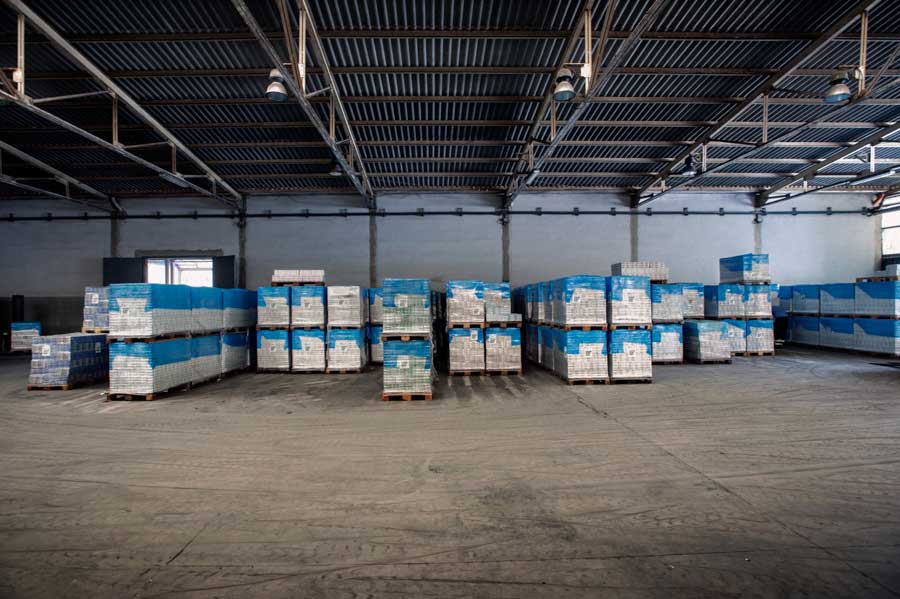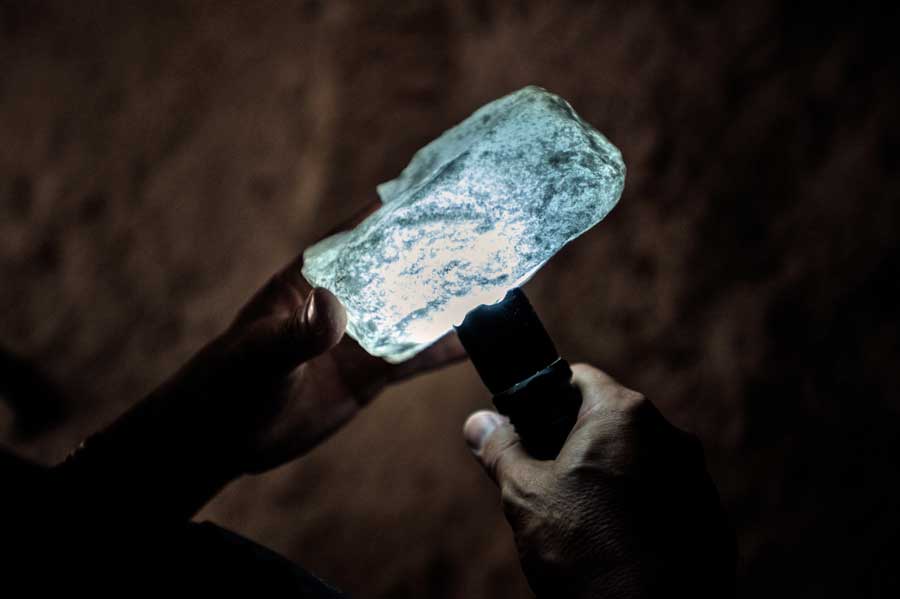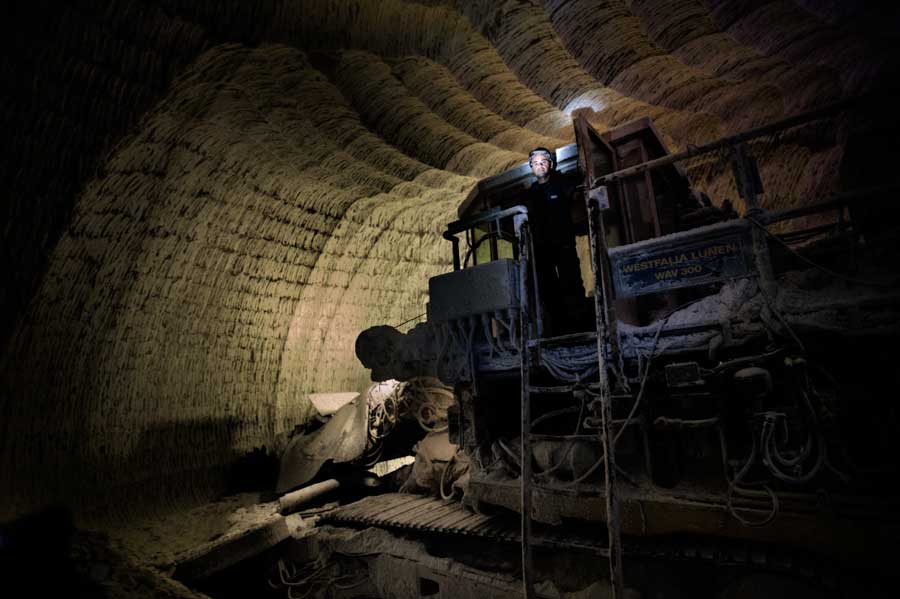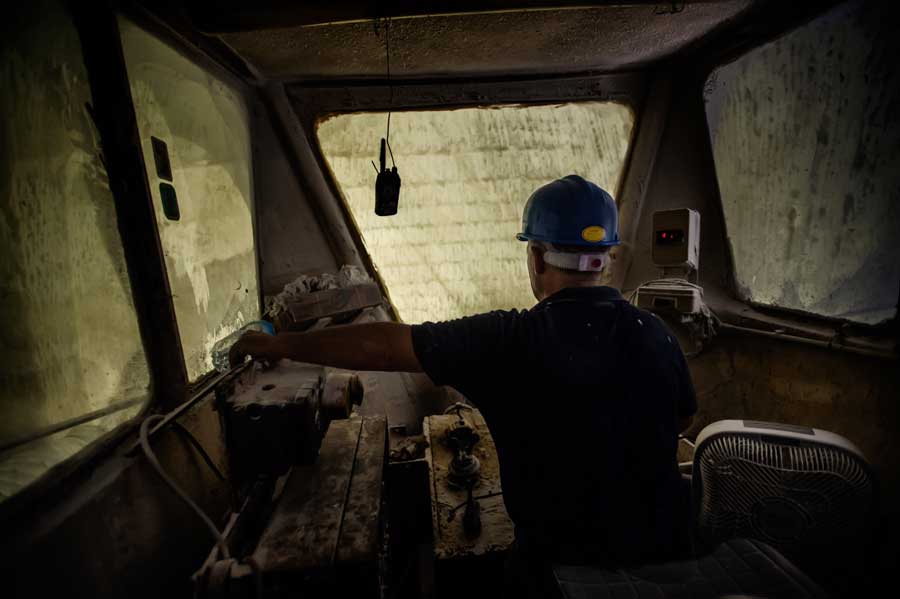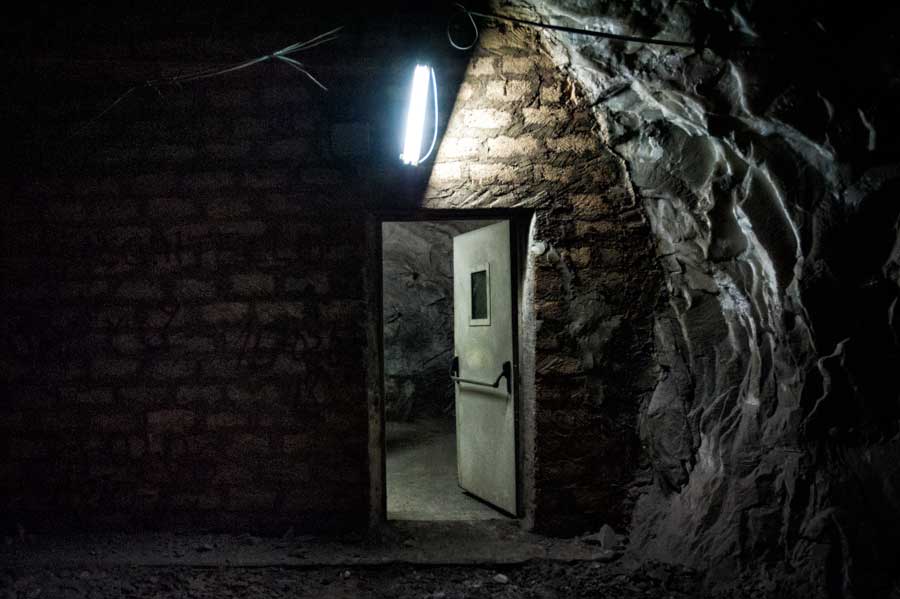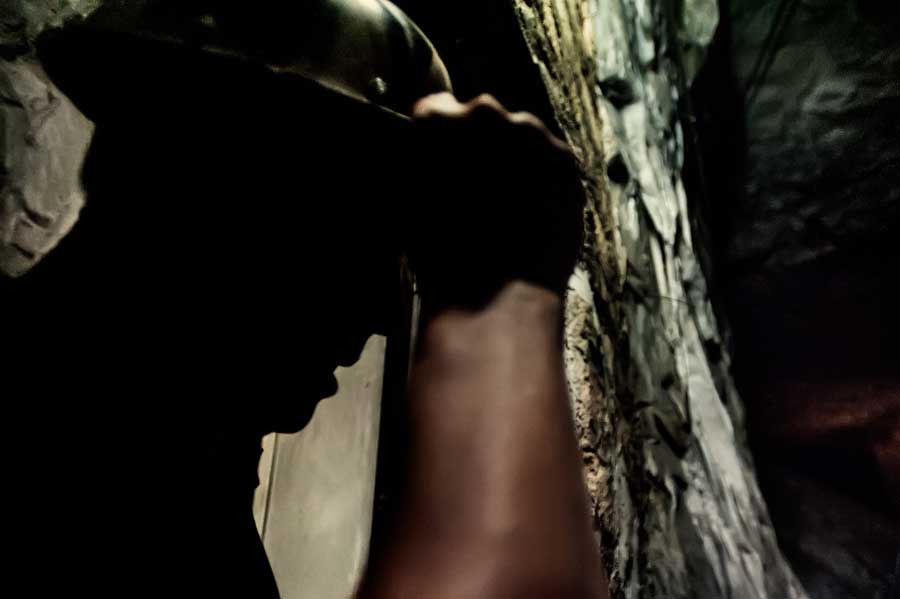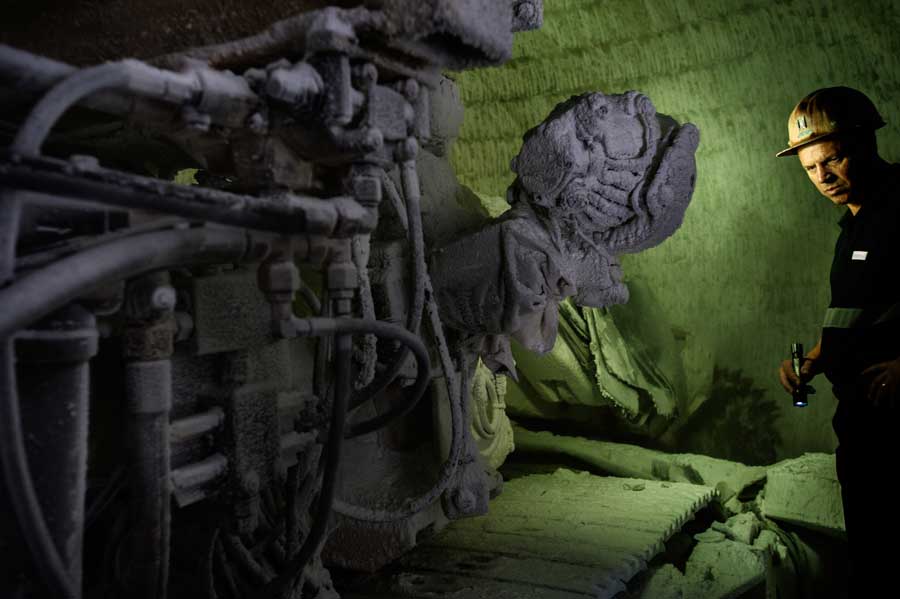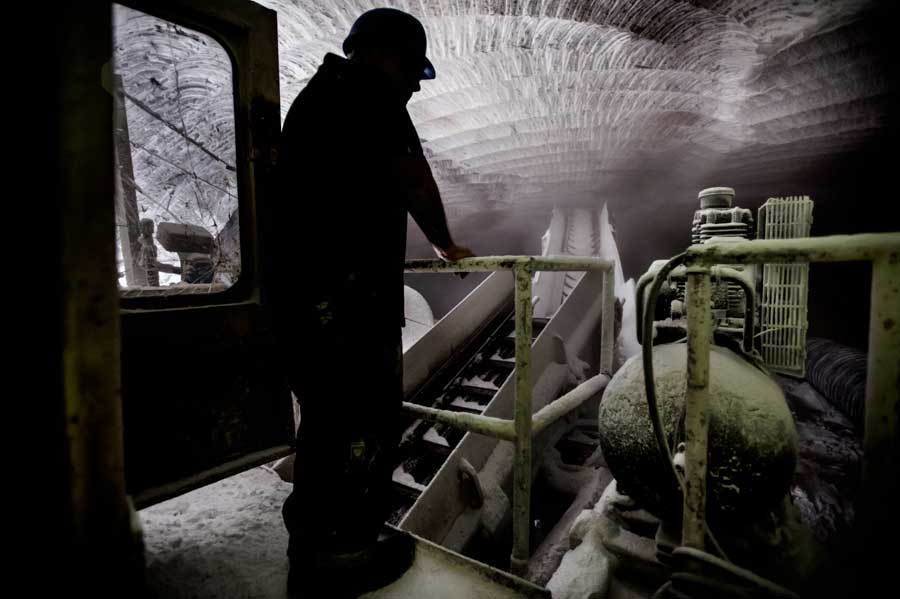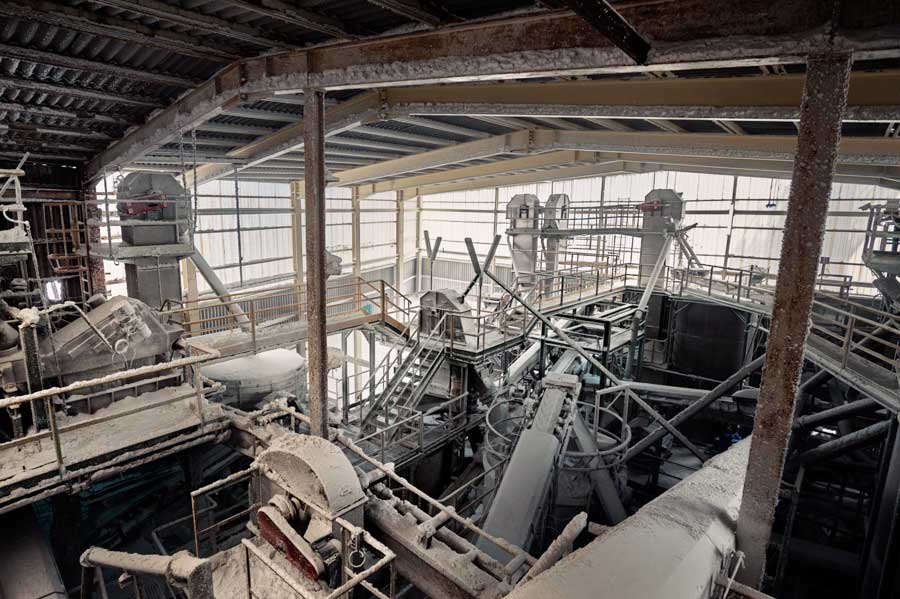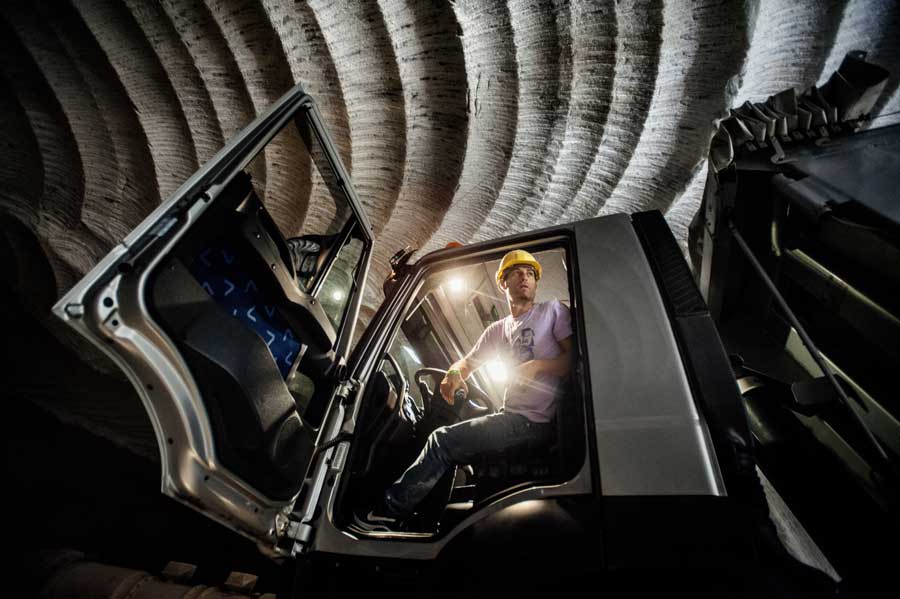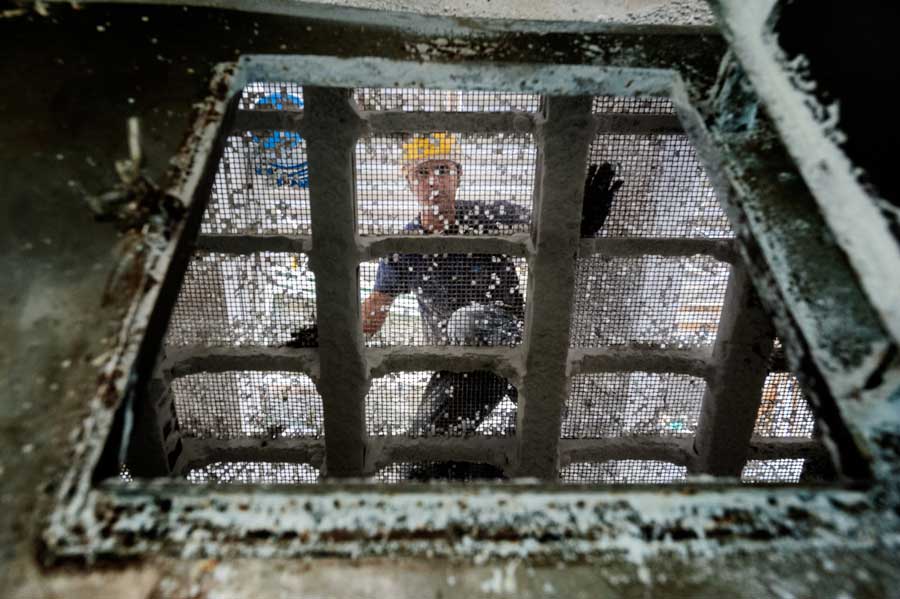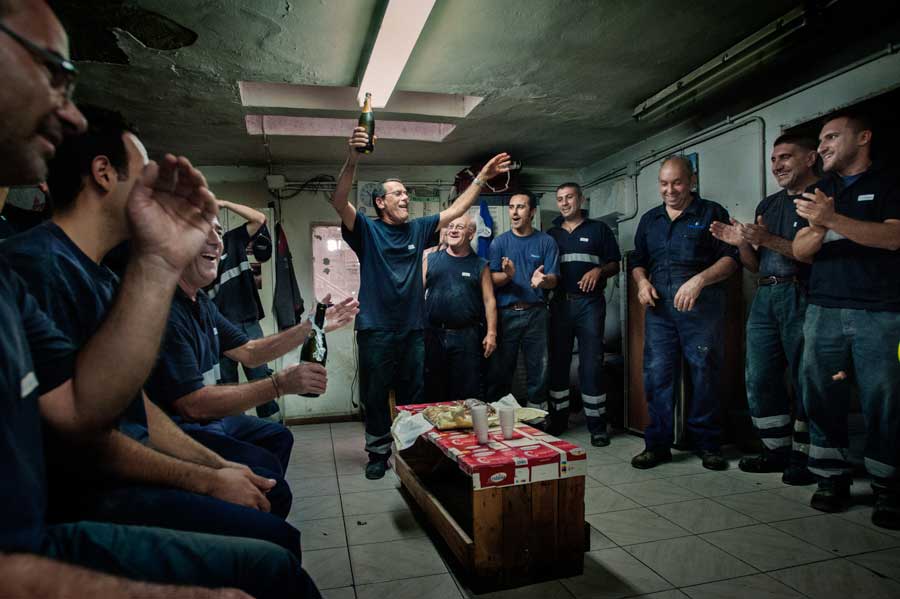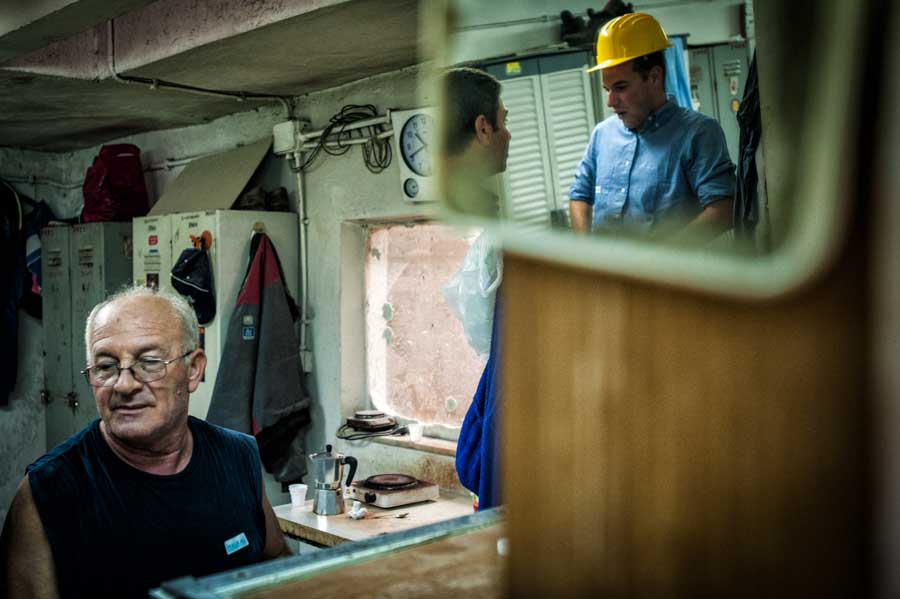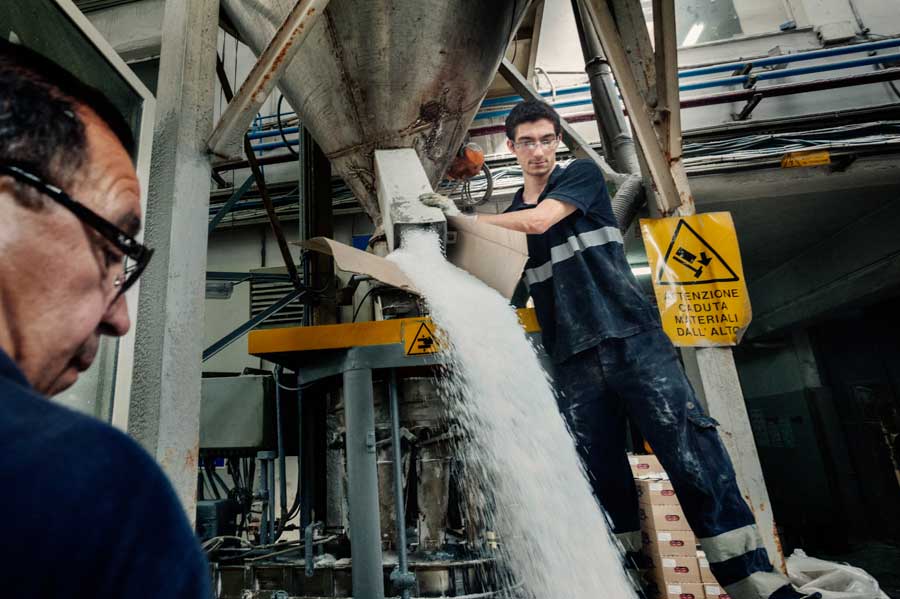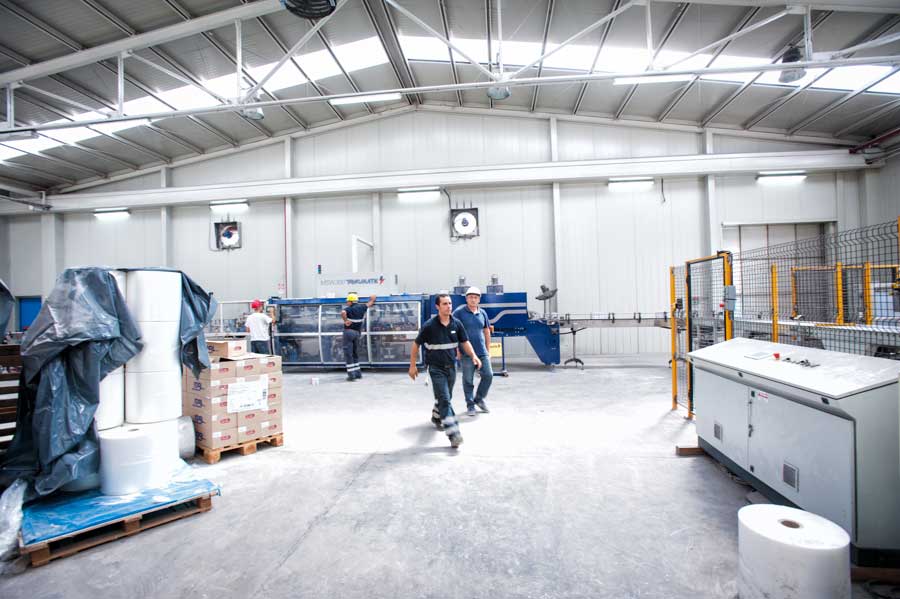In the heart of the largest Mediterranean island, the Sicily, volcanic land, rich in minerals, there are some of the biggest salt mines in Europe.
Between miles of tunnels and huge excavators, in a mysterious world that swings between the darkness and the white of the salt. Every day thousands of tons of salt from the quarries of Racalmuto leave Sicily to North Italy and northern Europe, where are used for food, chemical industry and for road safety during the winter.
The mine Racalmuto in Sicily, it’s one more rich deposits of salt in Europe: a huge lens of rock salt contained in the heart of a mountain. The mine is located in the Southern part of Sicily (between the provinces of Agrigento and Caltanissetta) and is accessible through tunnels and ramps along which heavy vehicles can travel and it is 100 metres deep.
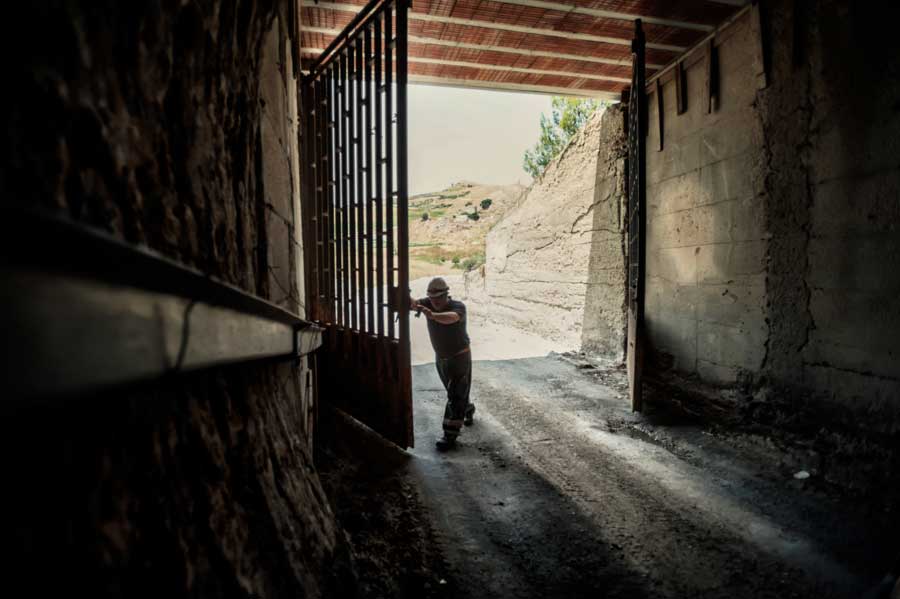
Near to the mine there is the packing plant: two separated production lines, one for human consumption, selected by means of prior testing and protected from any manual contact, and the other one for industrial applications, mainly for animal feed, tanneries and dyeing work industries .
Here it continues to resist the mining culture of Sicily through which a territory marked by a very high unemployment rate are still working and support dozens of families of miners.In the volcanic depths of the Mediterranean’s largest island lies a sculpted subterranean world filled with giant machines and strange lights; a place where whiteness meets darkness, and where thousands of tons of a precious yet familiar substance are excavated and shipped away every day.
The vast, white underground tunnels and chambers almost look as if they were dug out of snow or ice. Huge caverns underneath some Arctic wasteland, perhaps. Frozen water wouldn’t last long in these temperatures, however. Indeed, the hot, dry climate of these vaulted alabaster corridors – which form part of the rock salt mines of Sicily – is anything but Arctic.
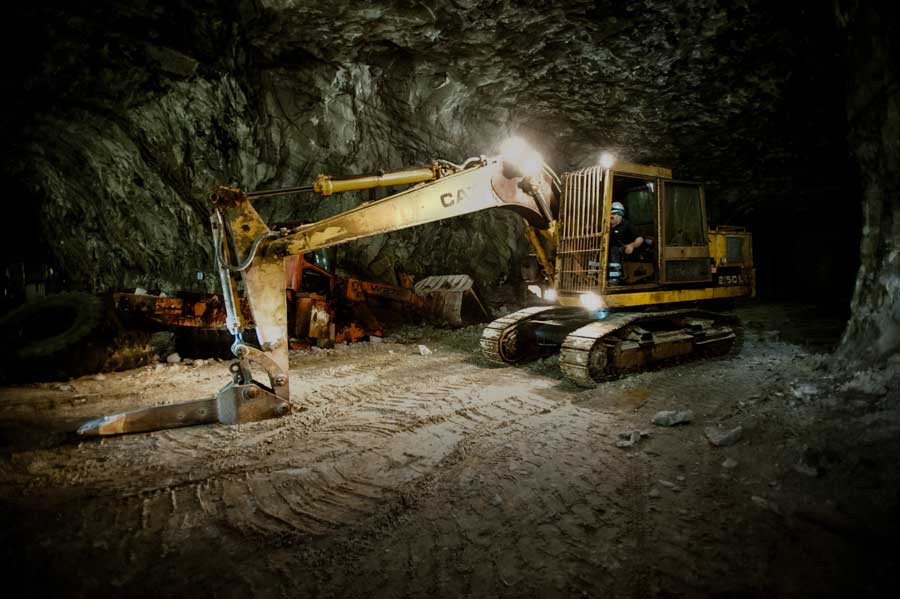
Going down in the mine, leaving behind the light, to enter into the bowels of the earth, where the work of man has created miles of tunnels, which penetrate the mountain for hundreds of meters below the surface. The feeling of claustrophobia immediately turns in astonishment. Galleries are not the narrow passages I expected, but large, enchanting and engaging, with streaks and textures worthy of a baroque cathedral. The mine is like a womb, it is the ‘beginning’, it’s here that there was the sea millions of years ago, when there was still no trace of man. Entering and descending through the network of tunnels is a step back in time. In the mine, time stops, losing track of it, the darkness and the shadows are the guardians of this kingdom which contrast with the white reflections of salt only illuminated by the machines that dig up to 7 meters of tunnel per day. The light. It’s a lunar landscape, where the lights of machinery, completely covered by a white powder, seem
eyes of unknown creatures. Thanks to the work of the miners, over 500 tons of salt each day, left in the hands of oblivion, come to the sunlight. The trucks go up from the depths of the earth doing constantly back and forth to bring the salt crystals to the refinery. Here the light is blinding, made of flares, a blanket of white “snow” wraps everything. Daily dozens of workers select and package it to create that product that is so familiar to all, but which in just a few can imagine the origin. It is thanks to the courage, passion and professionalism of these men that at every moment the rebirth of a particle of the universe is accomplished.
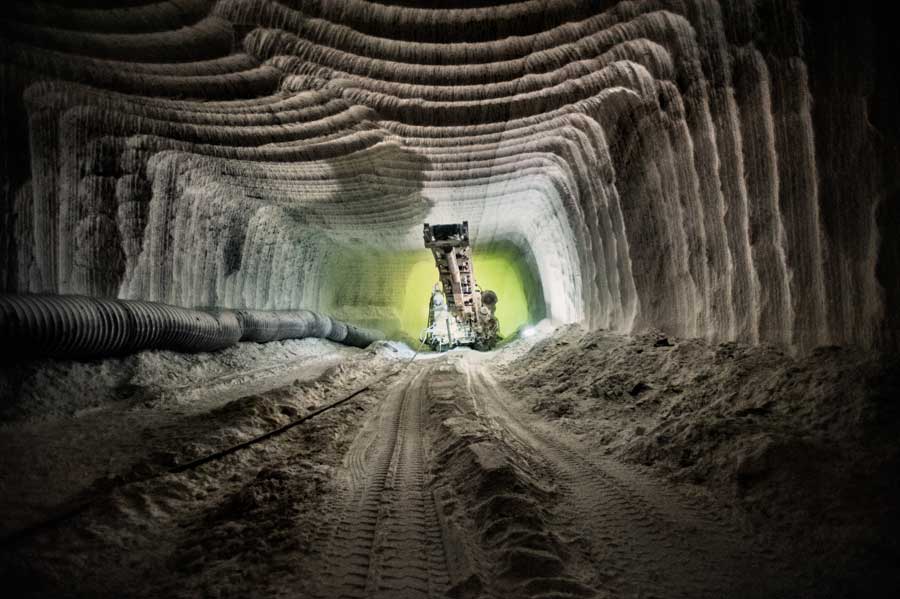
About Simone Tramonte
Simone Tramonte was born in Rome in 1976 and after graduating in Economics he decided to devote his attention to photography. He is a freelance photographer that works and is mainly based in Italy. He began photographic studies with particular attention to social and anthropological issues. Involved in documentary photography since the 2007, his work is focused to documenting contemporary issues and the profound cultural changes.
His projects have been published in international magazines such as Internazionale, National Geographic, Geo, Indipendent, The Guardian, The Telegraph, Southeast Asia Globe, CameraRaw, TheTripMagazine, Sguardi. This works has been exhibited at Fotoleggendo in Rome, at the Chiostro del Bramante in Rome, at the ArtBasel of Basel, at the Kolga Tbilisi Festival of Georgia. [Official Website]
